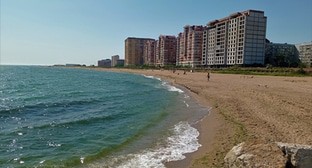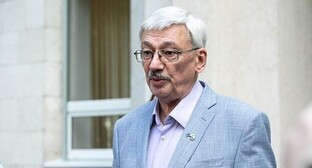08 May 2003, 13:47
Tmutarakan princedom
Old Russian princedom on Tamansky peninsula with the centre in the city of Tmutarakan. Existed in X-XII centuries.
Occurrence of the EastSlav population on Tamansky peninsula is connected with campaigns of prince Igor (944) to Byzantium and prince Svjatoslav (965) to Jasees (Alans) and Kasogs (Adygees), though penetration of east slavs to Caucasus and adjoining areas have begun much earlier: the Persian historians mention occurrence of Russians on Caspian sea about the year of 880, then in 909 and 910. In 913-914 Russians appeared on the Caspian sea again on 500 ships, 100 persons in each. Having passed Dagestan, they located on one of the islands near Baku and were dominating on the sea for several months. At the same time another group of Russians landed on a southeast coast of the Caspian sea near Ferekhabad. The group took a big extraction, but, coming back home, it was broken by Khazars near Volga mouths. That failure on Volga induced Russia in 944-945 to choose another way for a campaign to Caucasus. Over the Black sea Russians were directed along the Caucasian coast, and then by land to the north from the Caucasian ridge they came to Derbent. During a campaign the large and rich city of Berdaha was taken. It is probably necessary to connect occurrence of the slavic population in Tmutarakan(Tamatarkh) with a campaign of 944-945.
In 988 the Kiev prince Vladimir was sent to Tmutarakan on reigning of his son Mstislav who reigned untill 1036. Firstly the population of adjoining areas of Northwest Caucasus, in particular Adygees, were to pay tributes to the Tmutarakan princes. Military collisions also took place. In 1022 there was a duel of prince Mstislav and prince of Kasozh (Adygeya) Rededej, who was defeated and died. After that relations between the North Caucasian population and Russians were mostly peaceful and allied. In the very Tmutarakan there lived Adygees, Alans and representatives of other tribes and peoples. Their foreign trade took place through that city located on a coast of fine harbour.
Since the 60s of XI century the Tmutarakan princedom entered into possession of Chernigov prince Svjatoslav Jaroslavich. Since the end of the 70s of XI century Tmutarakan appeared a shelter of Russian princes who have suffered defeat in interstine struggle. In 1077 Boris Vjacheslavovich, and in 1078 Oleg Svjatoslavovich ran there. In summer - autumn of 1078 they employed Polovets people in Tmutarakan and went to Russia to assert the rights on the Chernigov princedom. Boris was lost in that struggle, and Oleg was compelled to return to Tmutarakan to his brother Roman.
In 1079 Roman together with the Polovets people went to Russia, but the Kiev prince Vsevolod Jaroslavich managed to bribe nomads and to conclude peace with them. On the way back the Polovets people killed Roman. Oleg, due to intrigues of Vsevolod Jaroslavich, was grasped by Khazars in Tmutarakan and was sent into exile to Byzantium under supervision of the Byzantian relatives of the Kiev prince. Ratibor, sponsored by Vsevolod, began to rule in Tmutarakan. However, in 1081 princes Davyd Igorevich and Volodar Rostislavich ran to Tmutarakan.
In 1081 in Byzantium Alexey I Komnin came to authority and in searches of any urgent measures of rescueing the empire from enemies he had withdrawn Oleg from the island of Rhodes, married him to Pheophania Myzalon, representative of a notable Byzantian family. In 1083 with the help of the Byzantian fleet Oleg returned to Tmutarakan, punished the Khazars involved in the conspiracy of 1079, and let Davyd and Volodar off to Russia. Byzantium rendered service to Oleg as it was interested in the petroleum of Tmutarakan which was one of the components of the terrible weapon - "Greek fire". Oleg was ruling in Tmutarakan till 1094 when he became the Chernigov prince. It is difficult to tell who reigned in Tmutarakan after Oleg. It is known that after Oleg's death in 1115 Tmutarakan remained a Russian city and only later on it had passed under the authority of Byzantium, and the princedom stopped its existence.
In XIII century Tmutarakan (already under the name of Matrakh or Matrikah) became a residence of a prince of Zeekh (Adygean) and was under Adygeya authority prior to the beginning of XV century. In 1419 after wedding of a genoese Gizol'fi with the daughter of Circassian (Adygees) prince Bikha-hanum Matrega began a feod to the Gisol'fi family. In 1457 Adygees led by prince Kadibel'di had risen against genoeses and have grasped the lock of master Matregi Zakarija Gizol'fi, but the revolt was suppressed. After crushing the Genoa colonies in Crimea and at the Black Sea coast of Caucasus in Matreg in 1475 by the Ottoman empire, as well as in other cities of this region, the turkish garrison appeared.




